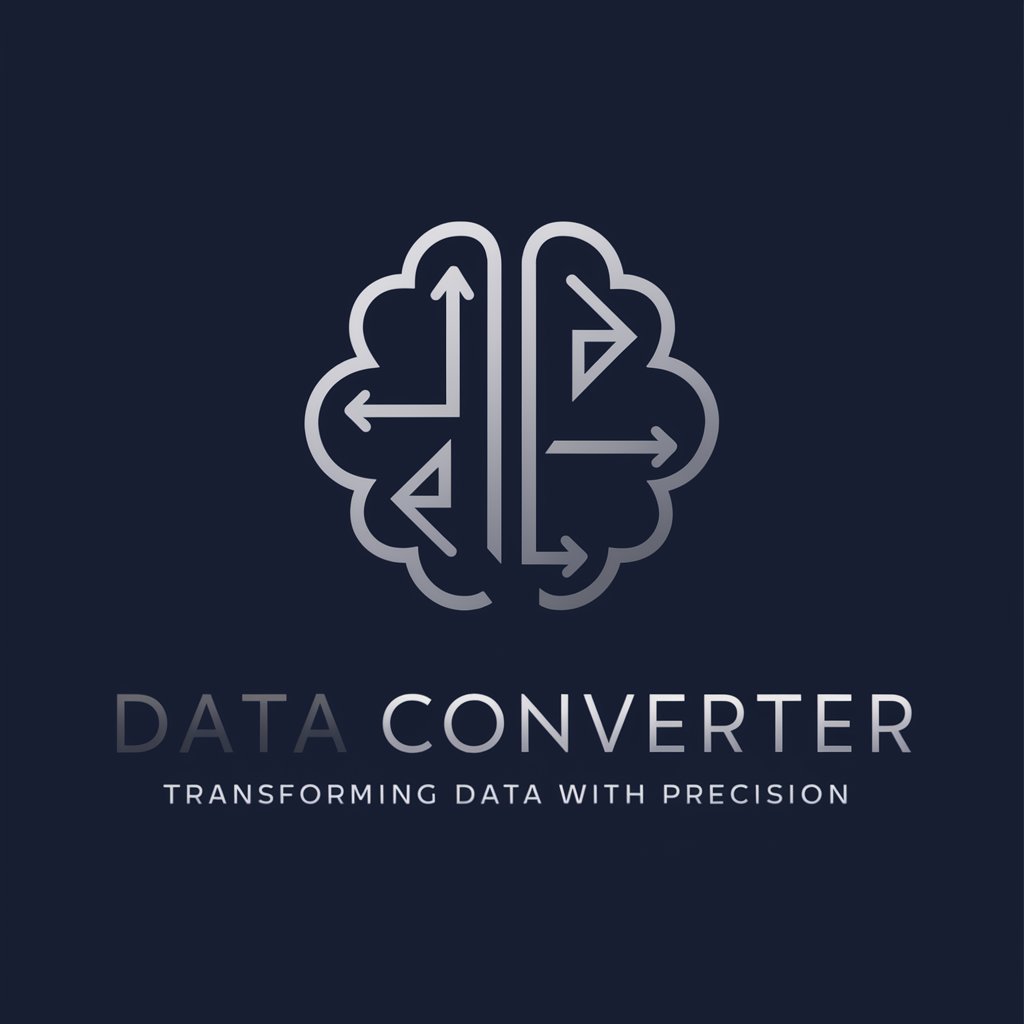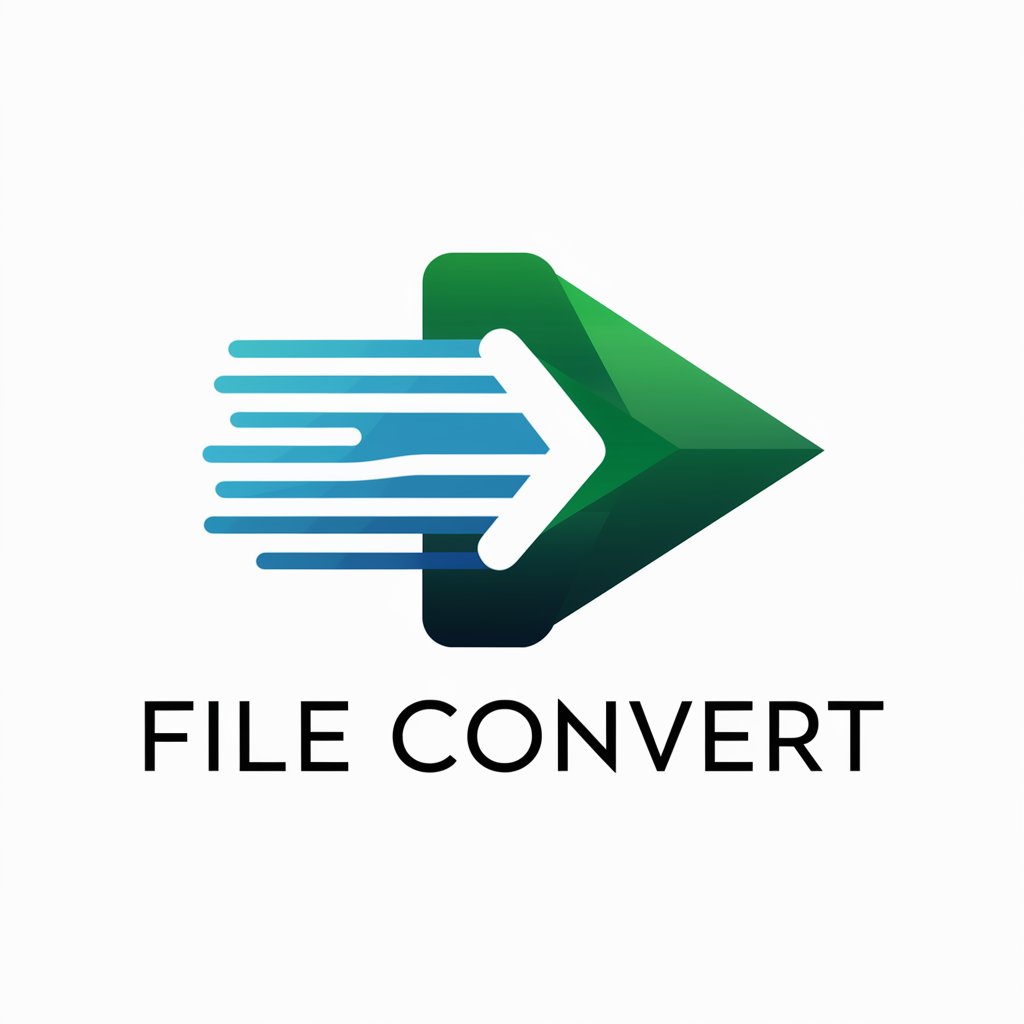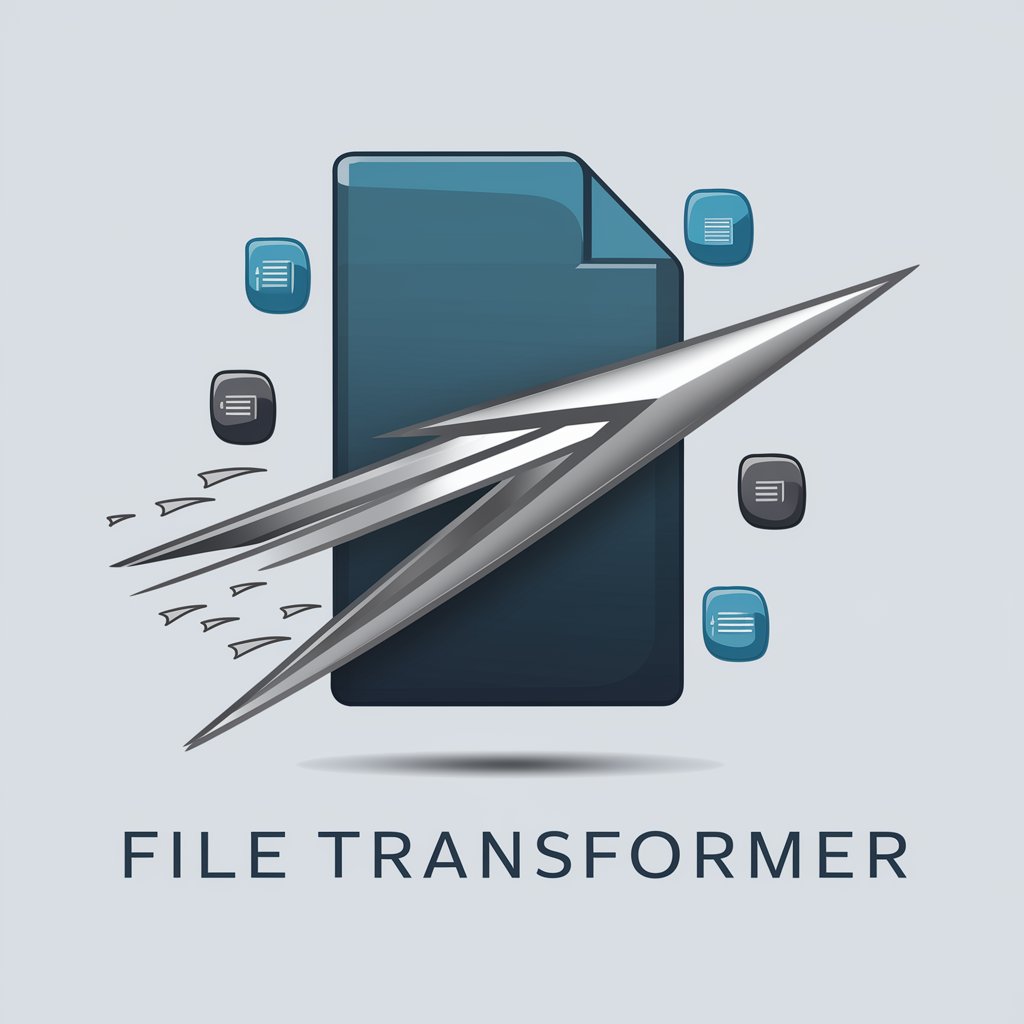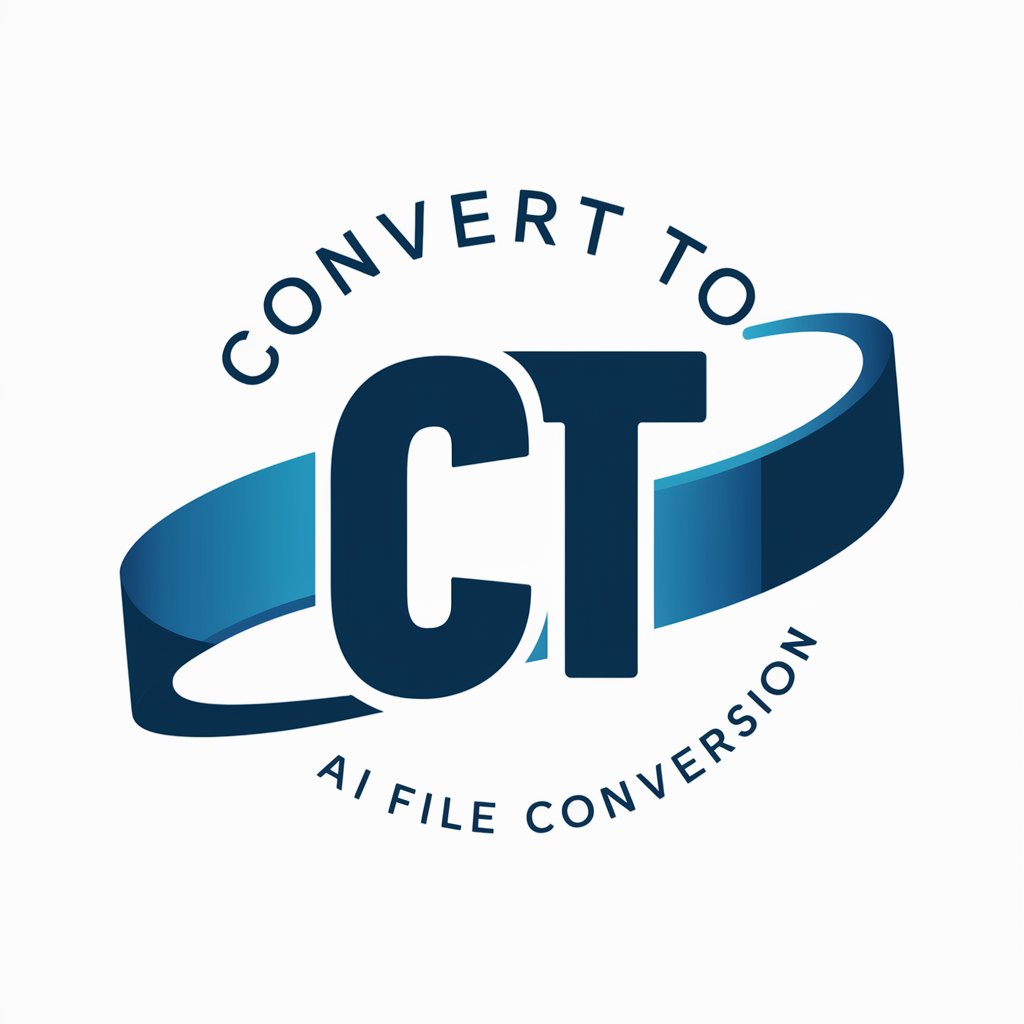
Data Format Converter - Data Format Conversion

Hello! I'm here to help you convert between JSON, XML, and YAML. Let's start!
Transform data seamlessly with AI
Convert this JSON to XML
How do I change this YAML to XML?
Is this XML correctly formatted for JSON conversion?
Help me convert this JSON to YAML
Get Embed Code
Overview of Data Format Converter
Data Format Converter is designed to facilitate the conversion of data between various formats, primarily focusing on JSON, XML, and YAML. These formats are widely used in data serialization and communication, especially in web development, configuration management, and data interchange between systems. The core purpose of Data Format Converter is to ensure that data retains its structural integrity and meaning across different formats, making it easier for users to manage and utilize data across diverse systems and platforms. For example, converting configuration files from YAML to JSON for a software that only accepts JSON inputs, or transforming data from an XML-based legacy system to JSON for use in modern web APIs. Powered by ChatGPT-4o。

Key Functions and Applications
JSON to XML Conversion
Example
{"user": {"name": "John", "age": 30}}
Scenario
Converting user data from a JSON structure to XML format for compatibility with XML-based legacy systems or applications that require XML for data import.
XML to YAML Conversion
Example
<user><name>John</name><age>30</age></user>
Scenario
Transforming configuration data from XML to YAML to simplify the readability and maintenance of configuration files for software development projects.
YAML to JSON Conversion
Example
user: name: John age: 30
Scenario
Converting a YAML file containing configuration or data into JSON format for use in web applications or APIs that consume JSON.
Target User Groups
Software Developers
Developers who work across various programming environments and need to convert data between different formats for application development, API integration, or legacy system maintenance.
System Administrators
Administrators who manage configurations across systems that utilize different data formats, requiring conversions for configuration management, automation scripts, or system migration projects.
Data Analysts
Analysts who deal with data extraction, transformation, and loading (ETL) processes across diverse data sources and need to convert data formats to integrate, analyze, or report data efficiently.

How to Use Data Format Converter
Start Your Journey
Begin by visiting a designated platform offering the Data Format Converter for a complimentary trial, ensuring access without the necessity for account creation or subscription to premium services.
Select Your Formats
Choose both the input and output data formats from the available options: JSON, XML, and YAML. This selection is crucial for the accurate conversion of your data.
Input Your Data
Enter your data into the provided text area or upload a file containing your data. Ensure your data is correctly formatted according to the chosen input format for a smooth conversion process.
Convert
Initiate the conversion process by clicking the 'Convert' button. The tool will then transform your data from the input format to the output format while preserving its structure and integrity.
Review and Download
Once the conversion is complete, review your converted data for accuracy. You can then download the result in the new format or copy it to your clipboard for immediate use.
Try other advanced and practical GPTs
AI Learning Designer
Empowering educators with AI-driven insights.

Resume Tailor
Tailor Your Resume, Elevate Your Career

AbogAI | Derecho Civil
AI-Powered Spanish Civil Law Expertise

Professional Business Resume Writer
Craft Your Professional Edge with AI

GPT Store
Custom AI solutions at your fingertips.
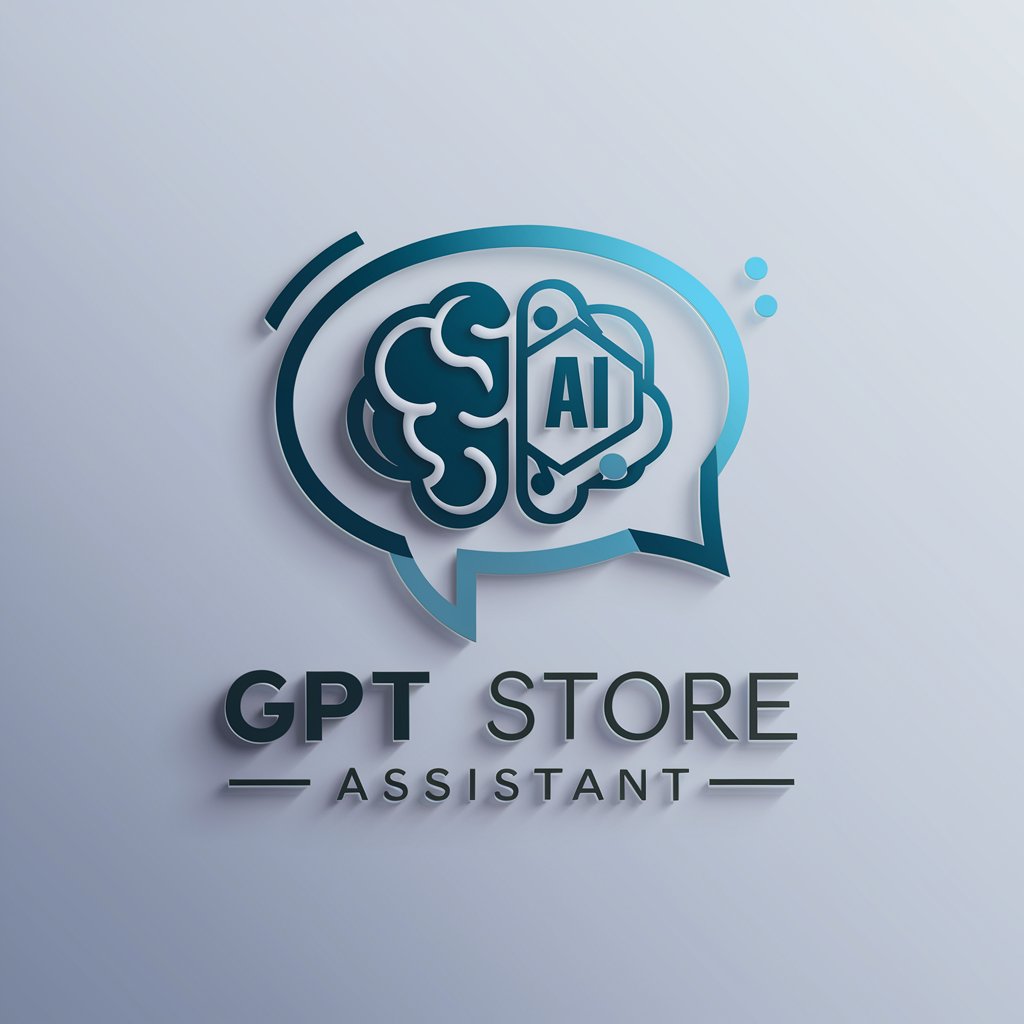
Lawyer Talk
Elevate Your Writing with AI-Powered Precision

Srimad Bhagavatham AI Guru
Unlock Ancient Wisdom with AI

Blog Maestro
Empowering your writing with AI innovation

Currency Converter
Real-time AI-powered currency conversions.

India Explorer
Your AI-powered guide to exploring India

Lingua Adiutor
Empowering Language Mastery with AI
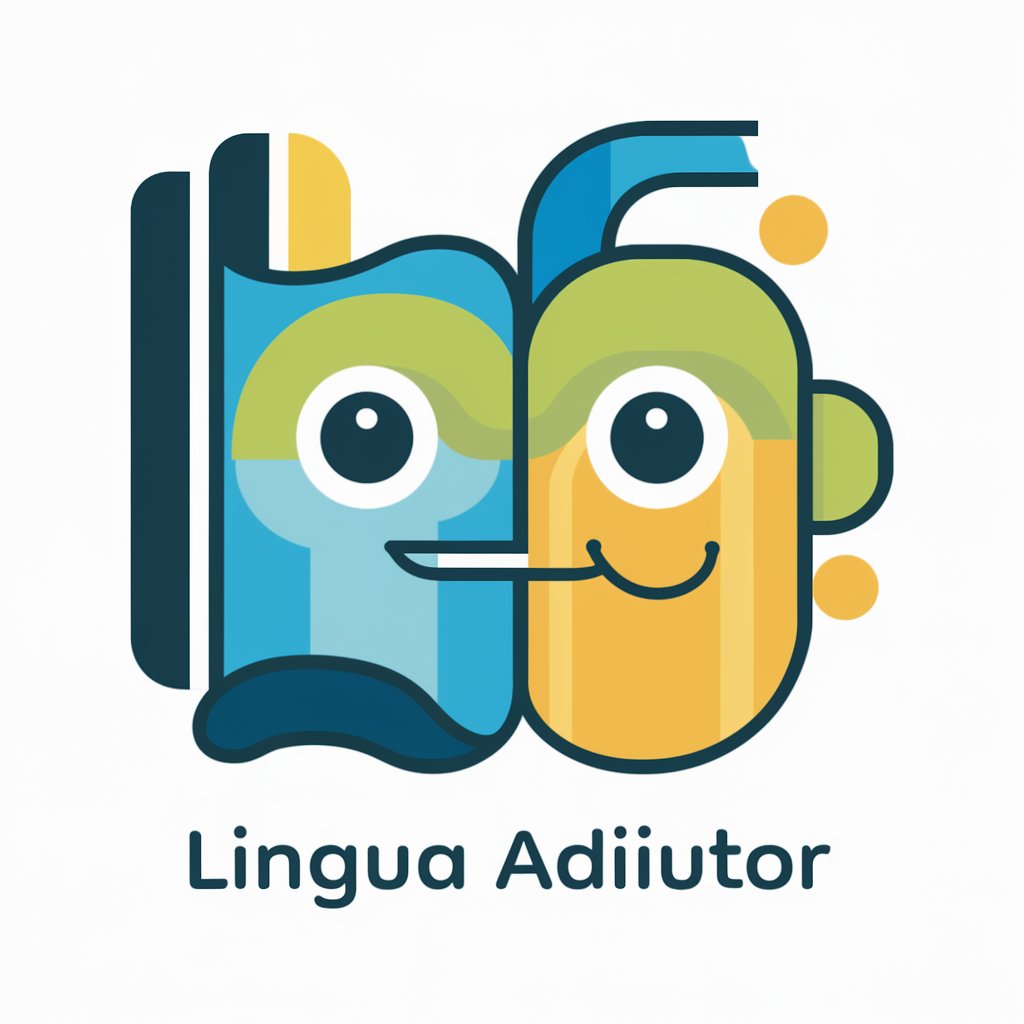
Festive Frames
Brighten Celebrations with AI-Created Imagery

Data Format Converter Q&A
What data formats does Data Format Converter support?
Data Format Converter supports three primary data formats: JSON, XML, and YAML. You can convert data among these formats according to your needs.
Is there a limit to the size of data I can convert?
While there might be practical limits based on the platform's capacity, small to medium-sized datasets are typically handled efficiently. For very large datasets, performance may vary, and it's advisable to segment your data if possible.
Can I use Data Format Converter for confidential data?
Yes, you can use Data Format Converter for confidential data as it processes data client-side, ensuring that your data does not leave your device. However, always ensure you're using a secure and trusted platform.
How can I ensure the best conversion results?
To ensure the best conversion results, validate your input data's format before conversion and review the converted data. Using the correct and well-formed input format significantly reduces conversion errors.
What are common use cases for Data Format Converter?
Common use cases include data migration between different systems, data integration from multiple sources, academic research involving data analysis, and development of applications requiring data in specific formats.
